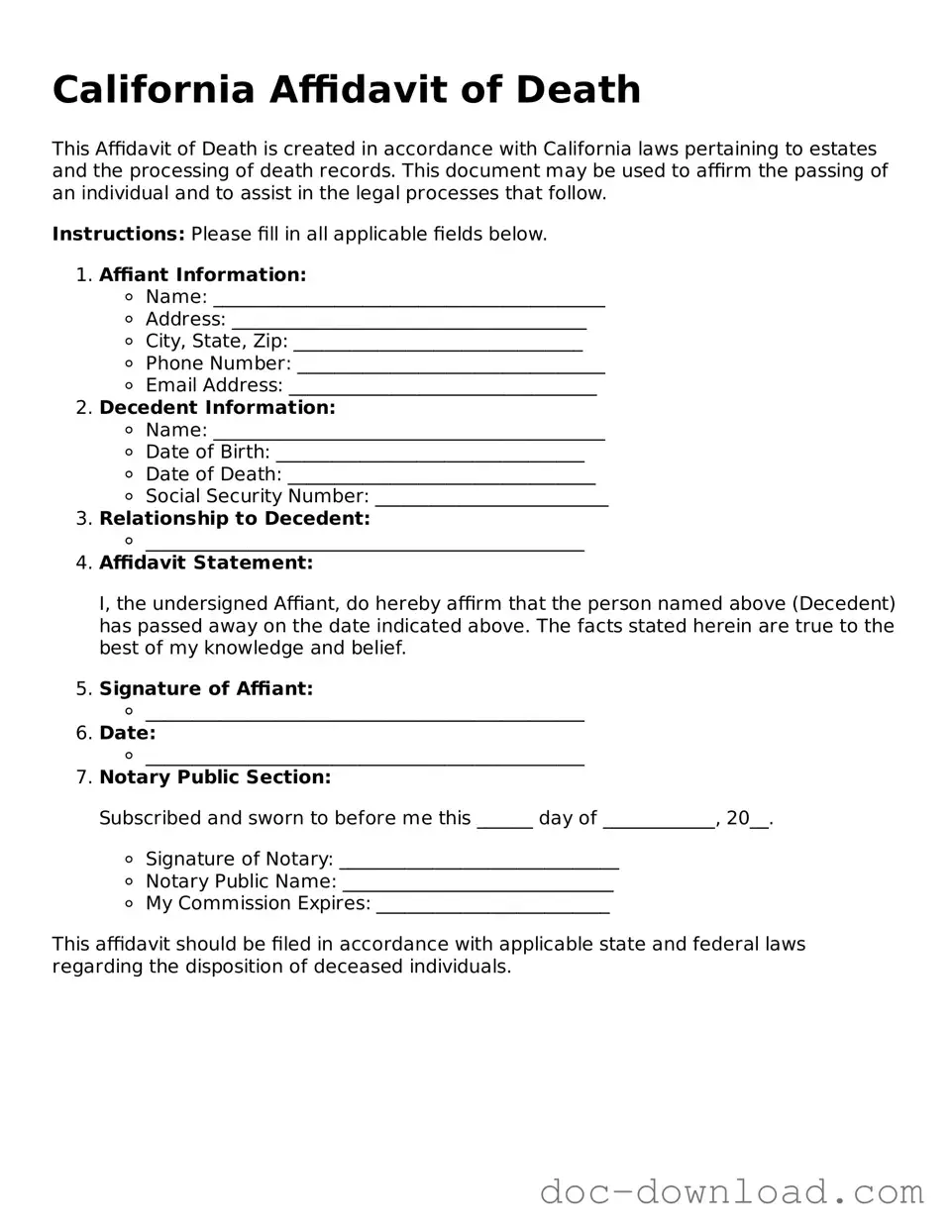The California Affidavit of Death form shares similarities with the Last Will and Testament. Both documents address the distribution of a deceased person's assets. While the Affidavit of Death provides proof of death for legal purposes, the Last Will outlines the deceased's wishes regarding asset distribution and guardianship. Both documents play crucial roles in the estate planning process, ensuring that the deceased's intentions are honored after their passing.
Another document akin to the Affidavit of Death is the Death Certificate. This official record serves as legal proof of an individual's death. While the Affidavit of Death may be used in various legal contexts, the Death Certificate is often required for settling estates, claiming life insurance, and other formalities. Both documents are essential for establishing the fact of death, but they serve different administrative purposes.
The Colorado Mobile Home Bill of Sale form is essential for anyone looking to ensure a smooth and legal transfer of ownership of a mobile home. This document not only protects the interests of both the seller and the buyer but also helps in preventing any potential disputes regarding the ownership of the property. For those needing assistance with this process, resources such as Colorado PDF Forms can provide valuable guidance and templates.
The California Declaration of Heirship is also similar. This document is used to establish the rightful heirs of a deceased person’s estate. Like the Affidavit of Death, it helps clarify the distribution of assets. However, the Declaration of Heirship specifically identifies heirs, while the Affidavit of Death focuses solely on confirming that an individual has passed away.
Additionally, the Petition for Probate bears resemblance to the Affidavit of Death. This legal document initiates the probate process, allowing for the administration of a deceased person's estate. While the Affidavit of Death confirms the death, the Petition for Probate details how the estate will be managed and distributed, making both documents integral to the probate process.
The Affidavit of Death is also comparable to the Living Trust Declaration. While a Living Trust is created during a person's lifetime to manage assets, it may include provisions for what happens after death. Both documents serve to facilitate the transfer of assets, but the Living Trust can provide a more comprehensive plan that avoids probate, whereas the Affidavit of Death is a specific declaration regarding death.
The Affidavit of Death can be likened to the Power of Attorney, particularly when considering the management of affairs after death. A Power of Attorney allows someone to act on behalf of another while they are alive, but it becomes void upon death. The Affidavit of Death, on the other hand, is used to confirm that the individual has passed, allowing for the transition of authority and asset management.
Lastly, the Certificate of Trust is similar to the Affidavit of Death in that both documents can be used in estate management. A Certificate of Trust verifies the existence of a trust and its terms, while the Affidavit of Death confirms the death of the trustor. Both documents are utilized in managing and distributing assets, ensuring that the deceased’s wishes are carried out in accordance with legal requirements.
